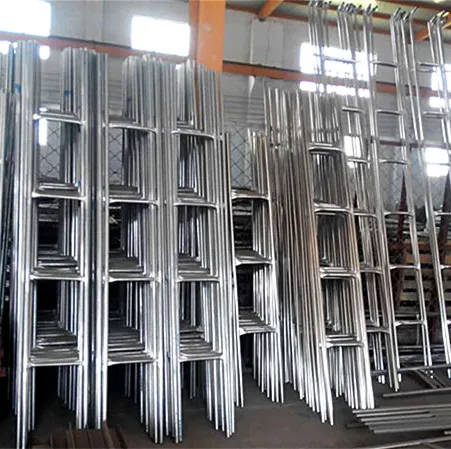loading...
- No. 9, Xingyuan South Street, Dongwaihuan Road, Zaoqiang County, Hengshui, Hebei, China
- admin@zjcomposites.com
- +86 15097380338
- Welcome to visit our website!
Anti Slip Stair Nosing | Enhance Safety and Durability
Anti-Slip Stair Nosing Enhancing Safety and Accessibility
Stairs are an integral part of many buildings, whether commercial or residential, and they play a crucial role in the overall design and functionality of a space. However, stairs can also pose a significant risk for slips and falls, which can lead to injuries. To mitigate this risk, anti-slip stair nosing has emerged as an essential safety feature in modern architecture.
Understanding Stair Nosing
Stair nosing refers to the protective strip that covers the edge of a stair tread. It is specifically designed to enhance safety by increasing the visibility of the stair edges and providing a textured surface that can help prevent slipping. Anti-slip stair nosing incorporates various materials and designs aimed at maximizing grip, particularly in environments where moisture, ice, or other hazardous conditions are prevalent.
Importance of Anti-Slip Features
The primary function of anti-slip stair nosing is to improve traction on stairs. Stairs are often made of hard materials like wood, tile, or concrete, which can be extremely slippery, especially when wet. By adding an anti-slip surface to the stair nosing, the likelihood of slips and falls is significantly reduced. This is particularly vital in commercial settings such as restaurants, offices, and public buildings where foot traffic is high and the risk of accidents increases.
Furthermore, anti-slip stair nosing is beneficial for individuals with mobility challenges, including the elderly and those with disabilities. For these individuals, a secure grip on the stair nosing can provide confidence and stability while navigating stairs, ultimately promoting independence and accessibility. By installing anti-slip features, property owners not only comply with safety regulations but also show a commitment to inclusivity.
anti slip stair nosing

Materials and Designs
Anti-slip stair nosing is available in a variety of materials, including rubber, aluminum, vinyl, and even specialized resin compounds. Each material comes with its own set of advantages. For instance, rubber stair nosing is excellent for absorbing impacts and providing cushioning, making it suitable for areas with heavy foot traffic. Aluminum, on the other hand, is durable and weather-resistant, making it an ideal choice for outdoor stairs.
In addition to varying materials, anti-slip stair nosing can come in different designs and colors, which allows property owners to select options that align with their aesthetic preferences while still maintaining functionality. Some designs even feature luminous strips that enhance visibility in low-light conditions, further improving safety.
Installation and Maintenance
The installation of anti-slip stair nosing is usually straightforward, and it can be done by professionals or competent DIY enthusiasts. It is crucial to ensure that the nosing is securely in place to prevent it from becoming a tripping hazard itself. Regular maintenance is also important to ensure longevity and effectiveness; cleaning the surface to remove dirt and grime will help preserve its anti-slip properties.
Conclusion
In conclusion, anti-slip stair nosing is a vital addition to any staircase that prioritizes safety and accessibility. By mitigating the risk of slips and falls, enhancing usability for individuals with mobility challenges, and providing a customizable aesthetic, anti-slip stair nosing exemplifies the intersection of safety and design. Whether for new construction or renovation of existing spaces, incorporating this safety feature is a step toward creating a safer environment for everyone.
-
GRP Structures: The Future of Lightweight, High-Performance EngineeringNewsJun.20,2025
-
FRP Water Tank: High-Performance Storage for Corrosive and Clean Water SystemsNewsJun.20,2025
-
FRP Square Tube: The New Industry Standard for Chemical and Structural ApplicationsNewsJun.20,2025
-
FRP Pultruded Profiles: The Ultimate Choice for Lightweight Structural StrengthNewsJun.20,2025
-
FRP Handrails: The Safer, Smarter, and Stronger Choice for Modern InfrastructureNewsJun.20,2025
-
FRP Grating: The Smart Solution for Durable, Lightweight Industrial FlooringNewsJun.20,2025
-
Why Choose a Galvanized Water Tank for Your Storage NeedsNewsMay.21,2025
